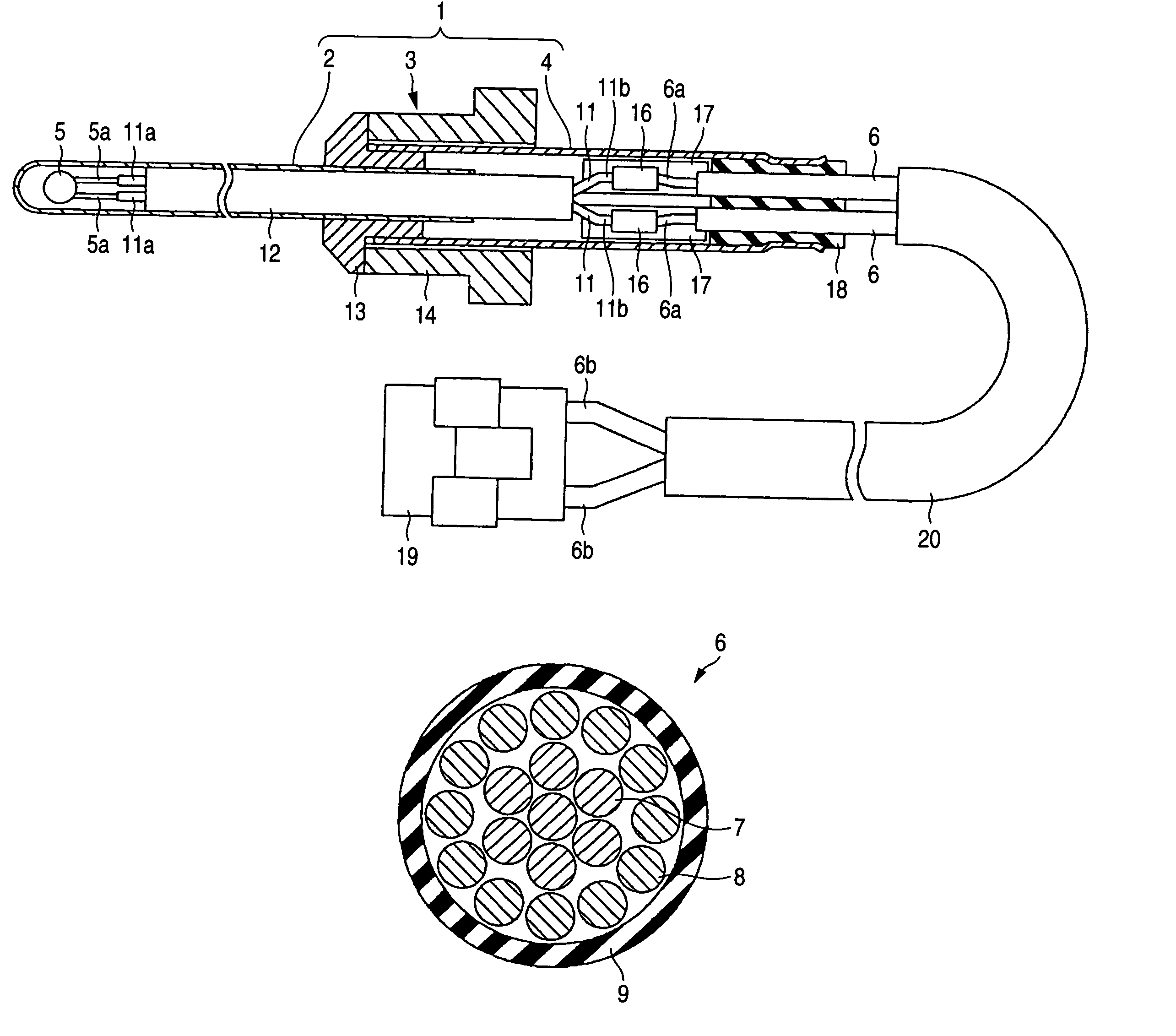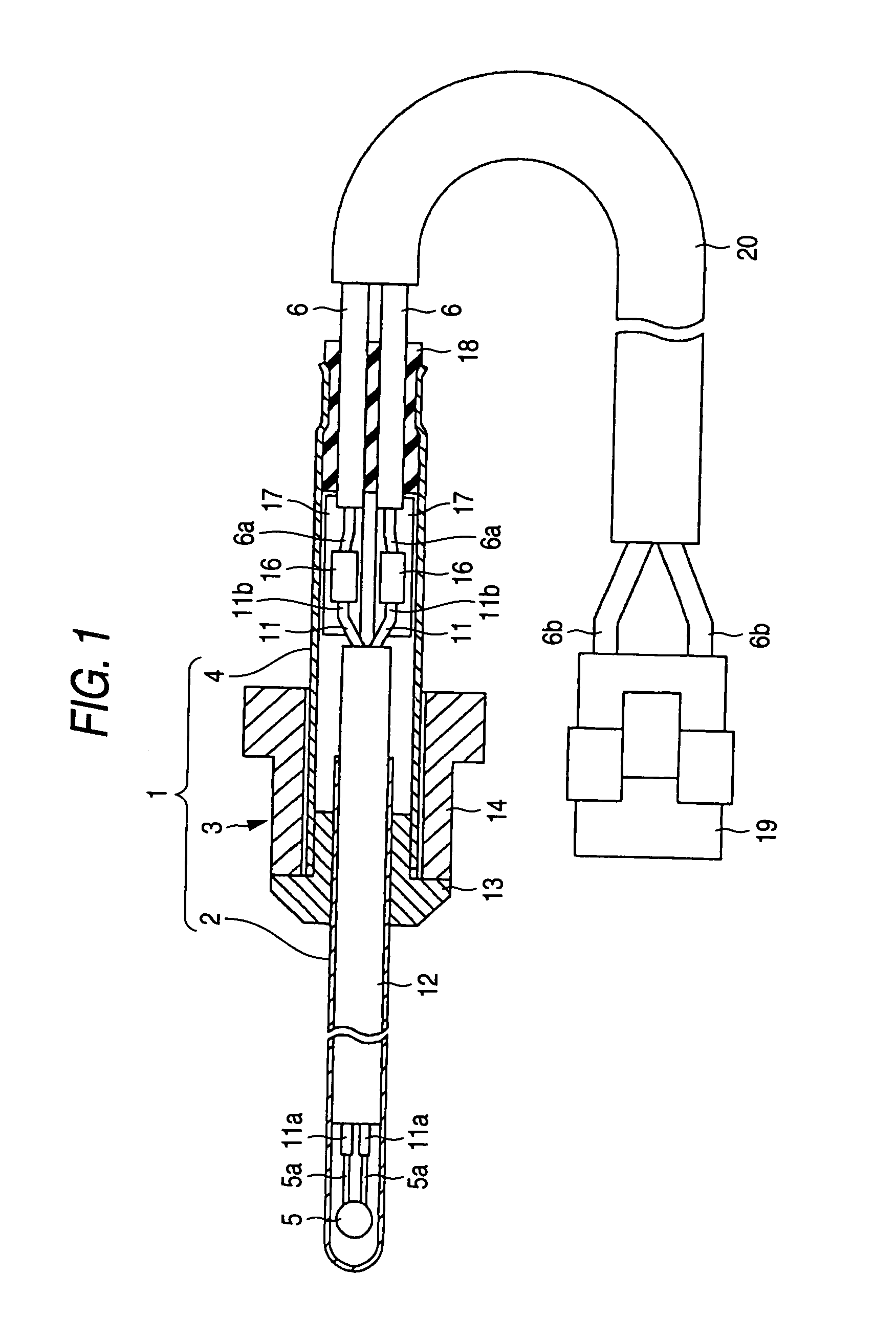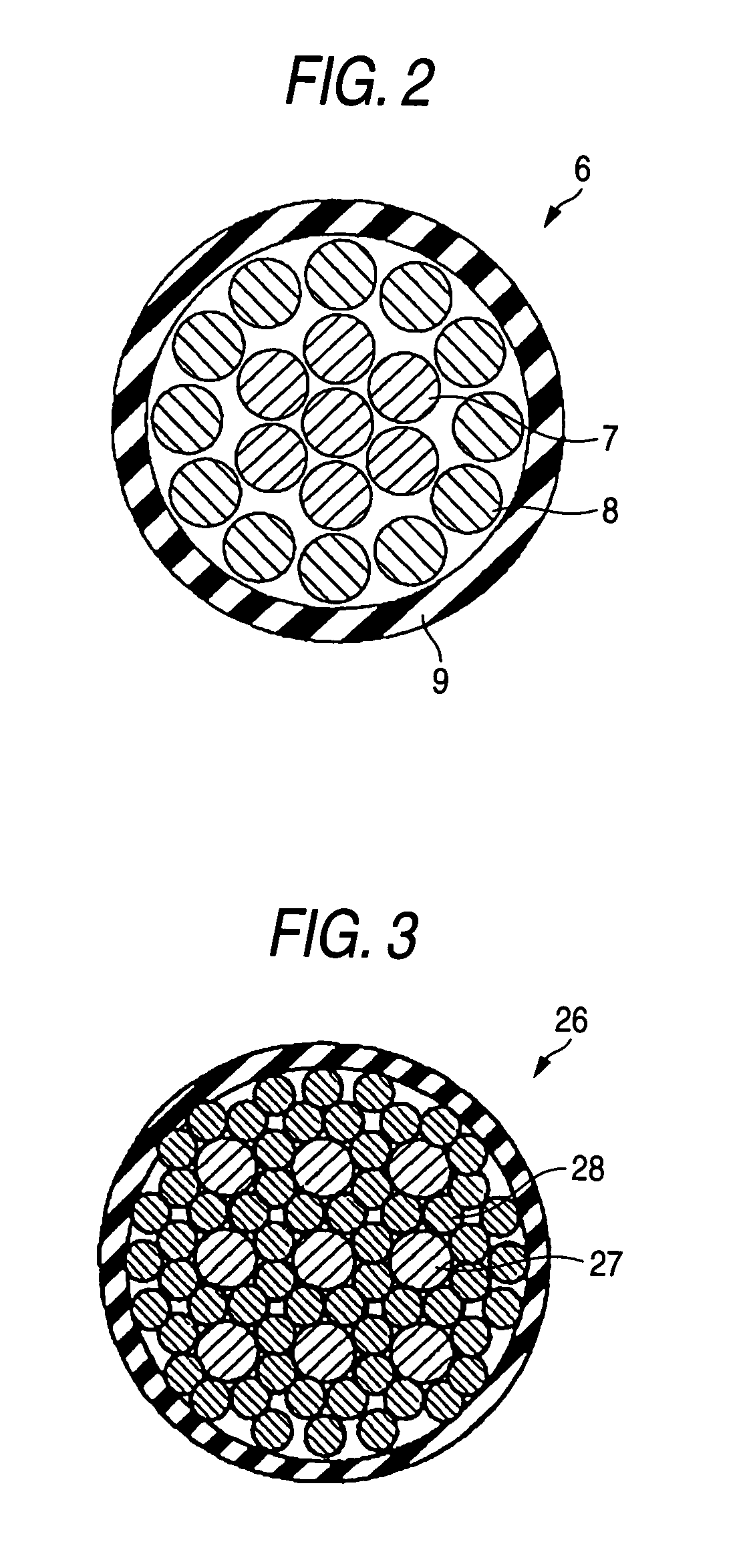Temperature sensor
a technology of temperature sensor and core wire, which is applied in the field of temperature sensor, can solve the problems of troublesome handling of temperature sensor, inability to ignore the resistance of lead wire due to the difference in length, and the disadvantage of the related art, so as to achieve the effect of reducing the contact resistance at the connecting portion between the lead wire and the core wire or the connector, avoiding the loss of data, and ensuring the accuracy of high temperature detection
- Summary
- Abstract
- Description
- Claims
- Application Information
AI Technical Summary
Benefits of technology
Problems solved by technology
Method used
Image
Examples
Embodiment Construction
[0023]An embodiment of the invention will be described with reference to the accompanying drawings.
[0024]FIG. 1 shows a sectional view of a temperature sensor of the embodiment. This temperature sensor is mounted in the exhaust passage of a not-shown vehicle and is used for detecting the temperature of the exhaust gas over a wide range. This temperature sensor is provided with: a housing 1; a thermistor housed in the housing 1 for acting as a thermo-sensitive element to output the electric characteristics varying with the temperature, as an electric signal; and a pair of lead wires 6 for extracting the electric signal from the thermistor 5 to the outside of the housing 1.
[0025]More specifically, the housing 1 is constructed of a first housing 2, a nut portion 3 and a second housing 4. The first housing 2 is formed into a cylindrical shape having a closed leading end. On the leading end side of this first housing 2, there is arranged the thermistor 5 for outputting a resistance varyi...
PUM
| Property | Measurement | Unit |
|---|---|---|
| length | aaaaa | aaaaa |
| length | aaaaa | aaaaa |
| lengths | aaaaa | aaaaa |
Abstract
Description
Claims
Application Information
 Login to View More
Login to View More - R&D
- Intellectual Property
- Life Sciences
- Materials
- Tech Scout
- Unparalleled Data Quality
- Higher Quality Content
- 60% Fewer Hallucinations
Browse by: Latest US Patents, China's latest patents, Technical Efficacy Thesaurus, Application Domain, Technology Topic, Popular Technical Reports.
© 2025 PatSnap. All rights reserved.Legal|Privacy policy|Modern Slavery Act Transparency Statement|Sitemap|About US| Contact US: help@patsnap.com



